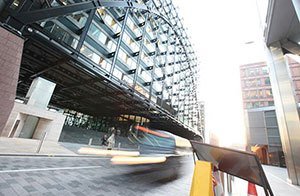As judgment is expected tomorrow in a court battle between a group of Herbert Smith Freehills (HSF) partners and their former colleagues who quit for White & Case, the documents from case reveal how the group quit, and what HSF wants to do to restrain them.
A group of 167 HSF partners took action in mid-February against eight former partners who resigned from HSF to join White & Case, including key project finance partner Brendan Quinn. The case has been heard in the New South Wales Supreme Court before Justice Robert McDougall this week, with HSF wanting to stop the White & Case partners from joining on their planned start day – tomorrow (2 March) and instead have them join on 1 September this year. At issue is whether certain clauses in HSF’s partnership deed are enforceable.
HSF claims the partners co-ordinated their exits, citing emails from Quinn to White & Case partners, and a Legal Business article where the hires are first revealed.
HSF suggests Quinn had been preparing the exits as early as September 2015 this year, as evidenced by emails between Quinn and senior management at the US firm. Quinn had also sent an email to his personal email account recording an agenda with the following items ‘update on vote, update on offer letters, staff, accommodation,’ and with the closing item ‘when do we pull the pin.’
According to the documents, the board of HSF Australia amended the firm’s partnership deed to make White & Case a ‘specified competitor’ on 31 August 2016, the day before the eight partners resigned. According to the deed, former HSF partners can’t work for ‘specified competitors’ for six months after they resign.
On 1 September, the partners resigned within five minutes of each other, except Jared Muller, who quit about half an hour later.
HSF is also trying to restrict White & Case partners from working in particular areas, with maps annexed to the documents indicating restricted zones where HSF believes the partners should not work.
HSF argues that the location clauses are reasonable because outgoing partners ‘may, post-retirement, tend to be able to maintain a higher level of connection with HSF’s clients…in closer proximity to his or her former HSF Australia office’ and ‘restraints against working in competition within a restricted area are difficult for HSF Australia and/or the Global LLP to police.’
In a December 2016 letter addressed to the HSF Board, Seyfarth Shaw, the law firm representing the eight former partners, said the defendants did not regard these clauses because ‘they do not protect any legitimate business interest of Herbert Smith Freehills.’
HSF partners are being represented by Michael Pryse, while the White & Case partners are being advised by Seyfarth Shaw partner Chris Gardner. A mediation scheduled for 13 February failed.
White & Case’s move late last year to hire the 10-partner project finance team from HSF was one of the largest legal moves ever in the Asian market. A senior partner at White & Case has indicated that the team controls around £30m of business, while HSF put the figure at around £20m when calculated using an average of the team’s billings over three years.
Legacy Herbert Smith had some of the toughest exit terms in the City which led to a stand-off when property partner Chris de Pury quit for Berwin Leighton Paisner. Herbert Smith had threatened to enforce a 12 month convenant on top of a year’s notice.
However the firm’s merger agreement with Freehills overhauled the terms, cutting the notice period from 12 months to six, making it easier for partners to quit at a vulnerable moment.
tom.baker@legalease.co.uk











